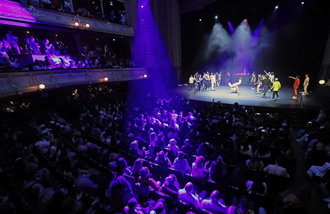Proliferation of Fakes Plauging Korean Antique Market
Proliferation of Fakes Plauging Korean Antique Market
Posted December. 09, 2009 08:24,

Half of the works circulating by calligrapher Chusa Kim Jung-hee and paintings by Heungseon Daewongun are fakes.
Traders say many fakes are being circulated on the domestic antique market, a trend made worse by the entry of Chinese-made counterfeits into Korea. Experts accordingly blame the contraction of Koreas antique market to the proliferation of fakes.
The Korea Association of Antiques is holding an exhibition to educate the public on fake antiques. The Exhibition of Koreas Antiques in 2009 World of the Real and the Fake will be held on the first, second and fourth floors of Suun Hall in Jongno, Seoul Dec. 15-30.
To feature around 800 real antiques and 200 fakes, the event will be Koreas largest exhibition of fakes. Visitors can take photos of fakes and get free expert opinions on their antiques Dec. 28-30.
Around 200 fakes to be displayed including paintings, chinaware, and artifacts will be provided by individual owners. Association President Kim Jong-chun said, Many owners of fake antiques hesitate to display them at the exhibition since they dont want others to know they have fakes. Were having difficulty persuading them.
○ Computer-assisted forgery
The methods of creating fake antiques have grown diversified. Some make counterfeits with their own hands while others use computers. Since such fakes have gotten more sophisticated, even experts have difficulty telling them apart from the real thing.
Common techniques used to create fakes include copying, separating the front piece of paper from the back, and changing signatures and seals.
In copying, a technique is used to copy specific paintings on Korean paper. Those who make fakes usually have outstanding painting skills, so they can easily copy originals.
After copying, the seals of painters need to be imprinted. Counterfeiters take photos of signatures and seals imprinted on the originals, create fake seals, and imprint them on the fakes. They even purchase pieces of paper produced several hundred years ago in China.
Separating the front piece of paper from the back is a technique that involves soaking Korean paper in the water, separating it into two pieces in a sophisticated technique, and making one painting into two. Since traditional pigments used in Korea centuries ago do not spread on the paper even when exposed to water, the technique does not damage colors in paintings.
Certain traders procure paintings imitated by the disciples of famous Joseon Dynasty painters, imprint the painters seals, and sell the fakes as authentic. A counterfeit of a famous painting by Sochi Heo Ryeon is one example.
○ Fake pottery
Techniques to create fake pottery have also gotten more sophisticated. Counterfeiters used to make the surface of pottery worn out to make them look authentic, and even painted patterns on the surface of white porcelain to fetch higher prices.
Fake porcelain with different qualities inside and outside has also emerged. A celadon bowl with an inlaid image of a boy is one example. Celadon porcelain with inlaid images of boys sell at higher prices, giving an incentive to counterfeiters to make them.
The most frequently used technique to create fake metal craft is producing fake antiques with molds, putting them in a bucket of chemicals, and artificially eroding the surface. By doing so, the fakes appear worn out as if they were made a long time ago.
kplee@donga.com







